West Virginia is home to several invasive species that quietly threaten the diverse ecosystems of the state. In this article, I will explore 9 of the unassuming but harmful invasive species in West Virginia that are reshaping the landscape. Let’s dive right in!

1. Asian Carp (Cyprinus carpio)
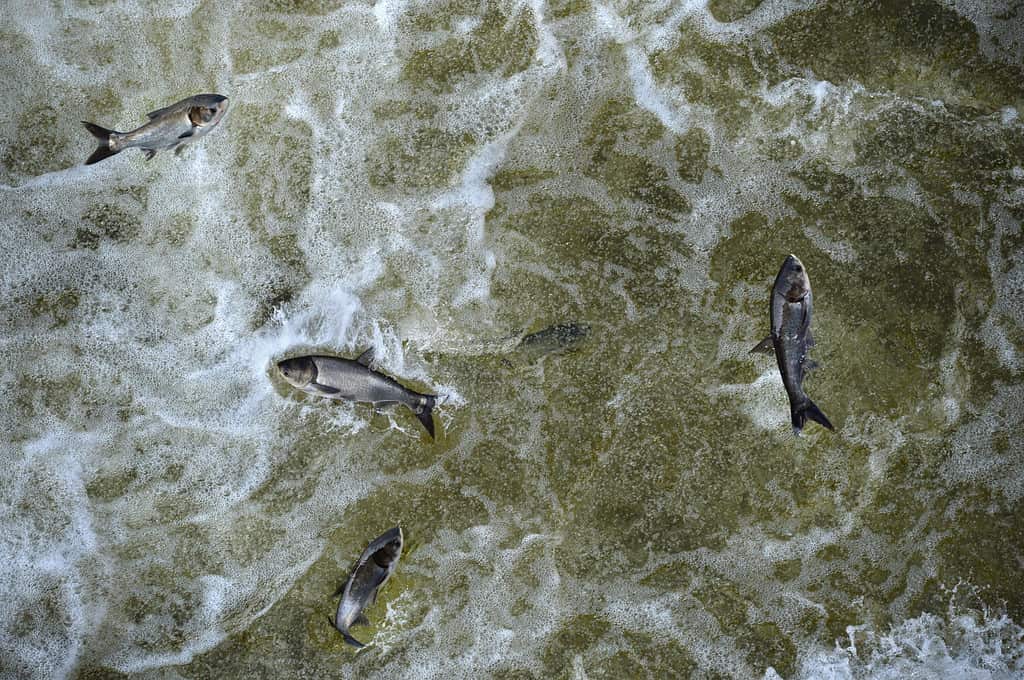
Originating in East Asia, the Asian carp is an invasive species that threatens waterways in West Virginia.
©Gino Santa Maria/Shutterstock.com
Asian carp is a collective term for multiple species of carp that are invasive to North America (bighead, silver, grass, and black carp). These fish are an invasive species that has entered West Virginia’s waterways.
Asian carp originated in East Asia; these fish were introduced to North America in the 1970s to help control algae, weed, and parasite populations in aquatic farms. However, due to flooding and accidental releases, they entered natural water bodies, swiftly growing in population and overwhelming many regions, including West Virginia. Adult Asian carp can grow to extremely large sizes, with some species, like the bighead and silver carp, reaching lengths of over 3 feet and weighing up to approximately 100 pounds. Also, Asian carp have a dull silver to gray coloration and a downward-facing mouth adapted for bottom-feeding.
Asian carp are considered invasive due to their explosive reproduction and voracious feeding habits, which enable them to outcompete native species for food and habitat. They are bottom feeders that consume massive quantities of plankton, algae, and other microscopic organisms — food sources vital for the survival of native fish and mussels.
Silver carp, known for their dangerous jumping behavior when disturbed, pose physical threats to boaters and damage commercial fishing equipment. The rapid proliferation of Asian carp and their detrimental effects on native species and human activities have resulted in substantial ecological and economic impacts on West Virginia’s aquatic ecosystems.
2. Water Shield (Brasenia schreberi)
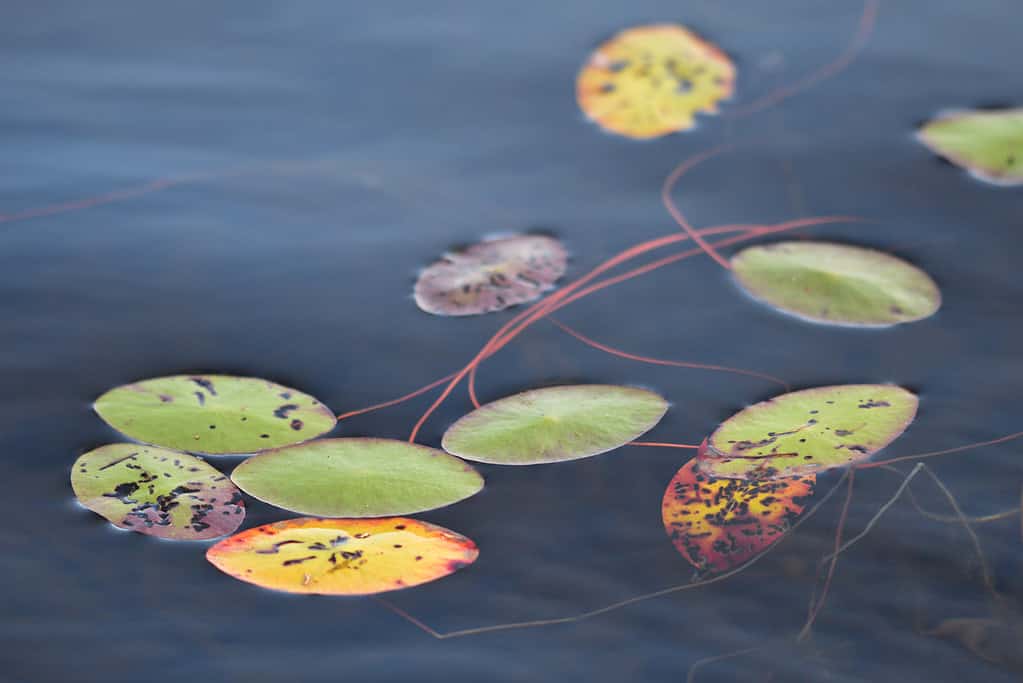
As an invasive plant in West Virginia’s waterways, you can commonly spot water shield in the wetlands of the region.
©Ryan Hodnett / CC BY-SA 4.0 – License
Water shield is an aquatic plant species that is native to much of America, Asia, and Australia. However, it’s considered an invasive species in certain regions like West Virginia, where it’s not naturally found. Water shield is a perennial aquatic plant that grows in still or slow-moving freshwater bodies. Its most distinguishing features are the small, floating, oval or elliptic leaves that are dark green or purplish-red. Underwater, the plant produces long, slender stalks that attach to a rhizome buried in the sediment. In summer, the plant blooms with small purple flowers that protrude just above the water’s surface.
Despite its beautiful visual appeal, water shield can pose significant problems when it establishes itself outside its native range, like in West Virginia. The species multiplies and forms dense mats on the water surface, hindering recreation activities like swimming, boating, and fishing. Additionally, these thick mats can block sunlight penetration into the water, disrupting the photosynthesis of native submerged plants and altering the aquatic ecosystem’s balance. The dense growth can also reduce the oxygen levels in the water, negatively impacting fish and other marine life.
3. Japanese Knotweed (Polygonum cuspidatum)

Japanese knotweed is an invasive plant species that is found across the USA
©Acabashi / CC BY-SA 4.0 – License
As the name suggests, Japanese knotweed is a plant native to East Asia, particularly Japan, China, and Korea, and is invasive in the United States. This robust perennial plant has been introduced to numerous parts of the world, including West Virginia. It is known for its tall bamboo-like stems that can reach over 7 feet and its large, heart or spade-shaped green leaves. The plant produces clusters of small, white, or cream-colored flowers in late summer. In autumn, the green stems take on a red or purple hue and may eventually become brown and woody in winter.
Japanese knotweed is considered invasive due to its rapid growth and the dense thickets it forms, displacing native vegetation and reducing biodiversity. It’s particularly troublesome because of its robust root system, which can extend several meters deep and may spread up to 70 feet from the parent plant in certain conditions. Even small fragments of these roots can generate new plants, making them extremely difficult to eradicate.
In West Virginia, the plant’s aggressive growth along stream banks can increase erosion and sedimentation, affecting water quality and aquatic habitats. Additionally, the thick growth of Japanese knotweed can limit access to water bodies for recreation and other uses. Its presence, therefore, poses a significant challenge to the natural ecosystem of West Virginia.
4. Crown Vetch (Coronilla varia)
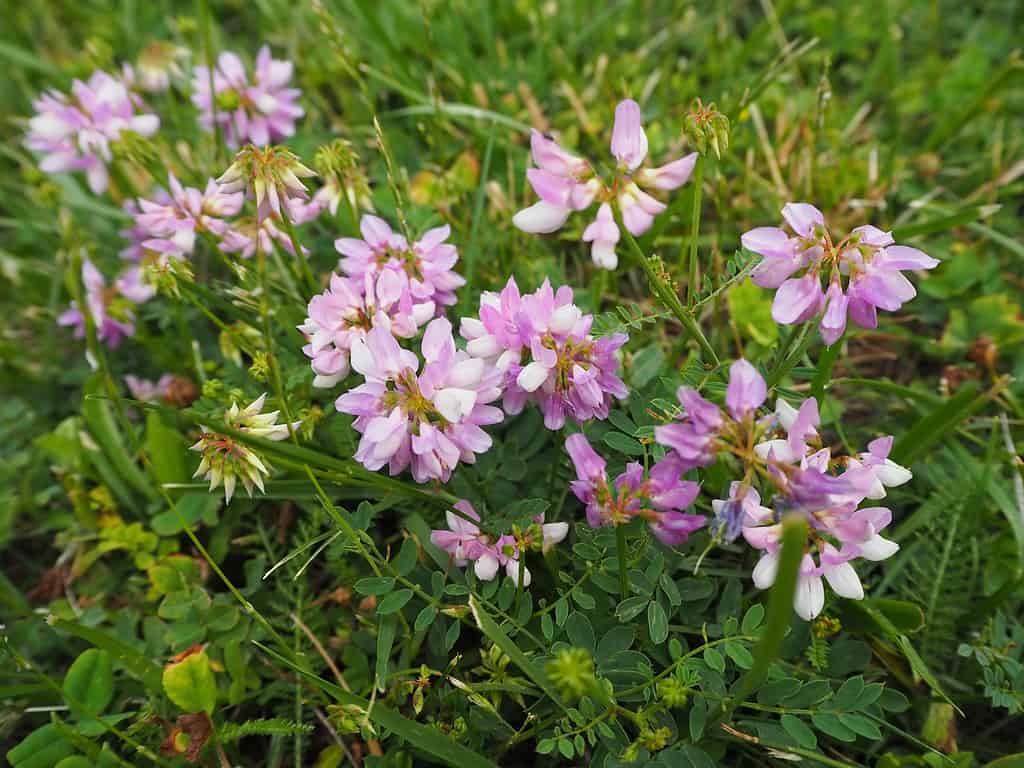
A rapidly spreading plant that reduces biodiversity, crown vetch is an invasive species in the state of West Virginia.
©mirti/Shutterstock.com
Crown vetch, native to the Mediterranean region of Europe and Asia, is a herbaceous perennial plant that has established itself as an invasive species in several parts of the world. Crown vetch is easily recognizable due to its growth pattern. It spreads through rhizomes, forming dense mats of foliage. The plant has compound leaves with up to 25 pairs of leaflets, and during the growing season, it can produce clusters of small, pea-like flowers. These flowers are usually pinkish-purple but can occasionally be white.
The plant was introduced to North America around the 20th century as a ground cover to prevent soil erosion, especially on steep slopes and highways. However, crown vetch’s aggressive growth and rapid spread make it invasive. It can easily outcompete native plants, taking over grasslands, open forests, and other habitats, thereby reducing biodiversity. In West Virginia, the dense growth of crown vetch can block sunlight from reaching other plants, impairing their growth. Moreover, the plant is not a suitable habitat or food source for most native wildlife, further disrupting the ecosystem.
5. Kudzu (Pueraria Montana)
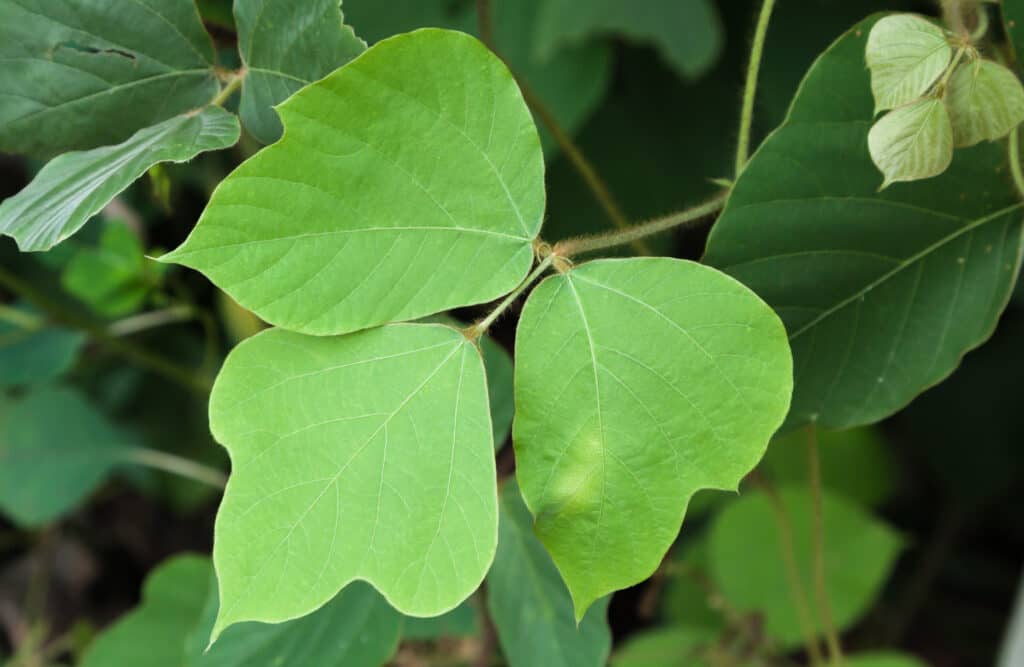
Kudzu is often mistaken for poison ivy due to its hairy stems and its ability to twine and climb. The vines can grow up to 60 feet in one season.
©iStock.com/TravisPhotoWorks
Kudzu, sometimes referred to as “the vine that ate the South,” is a plant native to Asia that has become a notorious invasive species in many parts of the United States, including West Virginia. Kudzu is a fast-growing, semi-woody, perennial vine that can reach up to 100 feet in length. It has compound leaves with three broad, oval leaflets and produces clusters of purple flowers with a distinctive grape-like odor. Furthermore, the plant can climb, trail, and spread across various surfaces, including trees, shrubs, fences, and buildings.
Introduced to the U.S. in the late 19th century for ornamental purposes and to control soil erosion, kudzu soon became invasive due to its rapid growth rate — up to a foot per day under optimal conditions — and prolific seed production. This plant is problematic because it can quickly overgrow native vegetation, completely altering the structure of the ecosystem it invades. In West Virginia, kudzu smothers native plants by blocking sunlight and can even kill trees by weighing them down over time. The monoculture that kudzu forms reduces biodiversity and alters wildlife habitats. Its extensive root system can also increase soil erosion when the plant dies in the winter.
6. Japanese Stiltgrass (Microstegium vimineum)
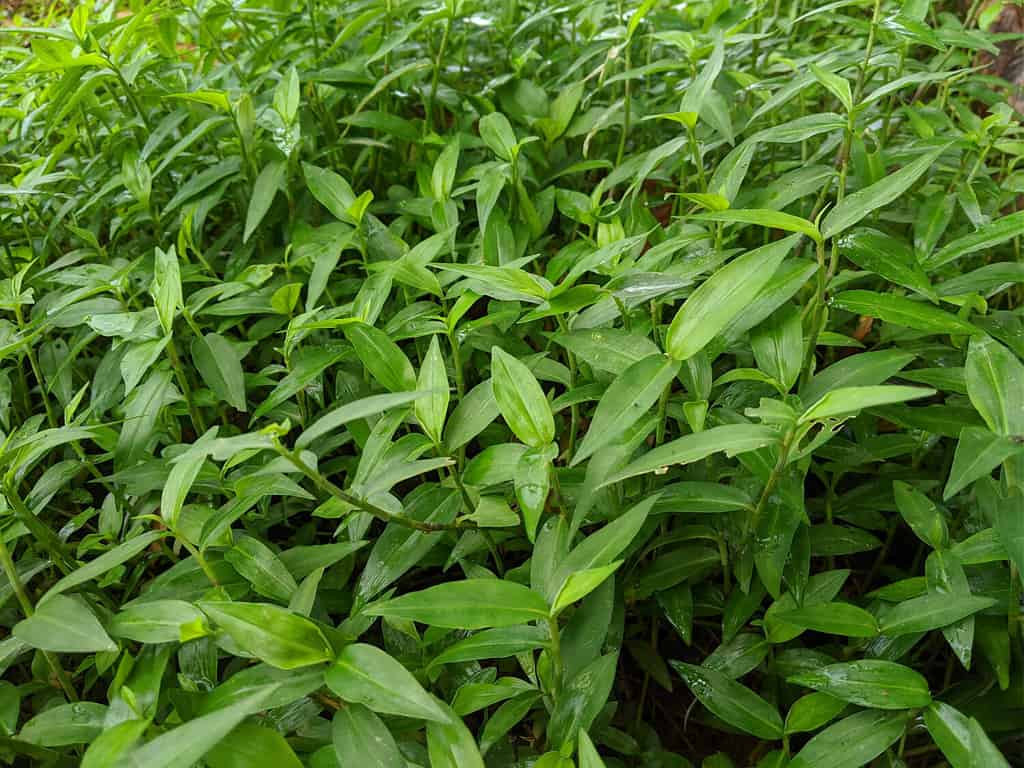
Native to Japan, and other areas of Asia, Japanese stiltgrass is invasive to West Virginia.
©Zikrieys Ahmad/Shutterstock.com
Japanese stiltgrass is an invasive species in West Virginia that is native to Asia. It was unintentionally introduced to the United States around the early 1900s, likely through its use as packing material for porcelain. It’s a delicate-looking plant with pale green, lance-shaped leaves that are asymmetrical and approximately 1-3 inches long. The plant can reach approximately 3 feet tall, with a distinctive sprawling, mat-like growth pattern.
From late summer to early fall, Japanese stiltgrass produces tiny, inconspicuous flowers on slender stalks or “stilts,” which is the feature that gives the plant its name. Japanese stiltgrass is considered an invasive species in West Virginia due to its rapid growth and adaptability to various conditions, from deep shade to full sunlight and moist to dry soils. It outcompetes native plants by spreading aggressively and forming dense stands that can alter the structure and function of the ecosystems it invades. Additionally, its ability to produce many seeds that may remain viable in the soil for up to five years adds to its invasiveness.
This invasive grass is detrimental to the local ecosystem as it decreases native plant diversity, alters habitat structures for wildlife, and even affects the natural regeneration of forests by crowding out tree seedlings.
7. Garlic Mustard (Alliaria petiolata)

Introduced to the USA in the 1800s, garlic mustard is a culinary plant that has become invasive in West Virginia.
©Martin Fowler/Shutterstock.com
Garlic mustard is a biennial flowering plant native to Europe and parts of Asia and North Africa. It was introduced to North America around the 19th century for culinary and medicinal purposes. When crushed, the plant is characterized by its heart-shaped, coarsely-toothed leaves that give off a garlic-like odor. In its first year, garlic mustard appears as a rosette of green leaves close to the ground. By the second year, the plant can send up a flower stalk, up to 4 feet tall, adorned with small white flowers.
Despite its innocuous appearance, garlic mustard has emerged as a highly invasive species in various regions of the United States. The plant thrives in shady forest habitats and has a unique ability to outcompete native plants. It achieves this by releasing chemicals into the soil that inhibit the growth of other plants and mycorrhizal fungi, which are essential for the health of many native plant species. Its prolific seed production and lack of natural enemies further contribute to its invasiveness. So, garlic mustard can take over understory vegetation in forests, reducing native plant diversity and negatively affecting the associated fauna.
8. Reed Canary Grass (Phalaris arundinacea)
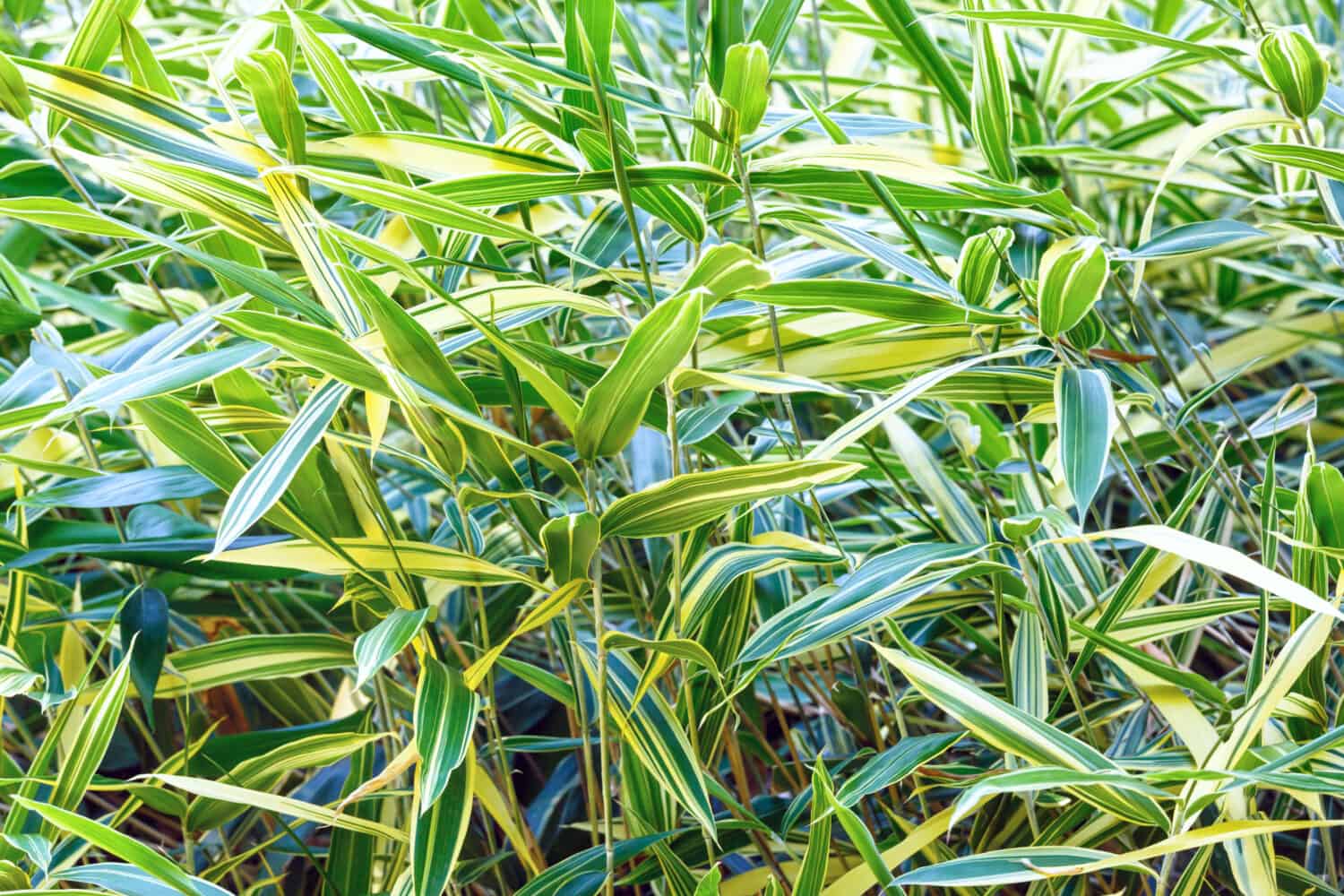
Some varieties of reed canary grass are native to the US, while others are invasive.
©Sun Shock/Shutterstock.com
Reed canary grass is a tall, perennial grass native to parts of North America, Europe, and Asia. However, aggressive, non-native varieties from Europe and Asia have been introduced, which can be considered invasive. The plant has broad, lance-shaped leaves, and grows in dense, monotypic stands, often reaching heights of 2 to 9 feet. It produces showy, feathery panicles of green to purple flowers that turn beige as they mature in the summer.
While reed canary grass does have a native range within the United States, the non-native varieties have become invasive in areas like West Virginia due to their rapid growth and resilient nature. These characteristics allow it to outcompete native vegetation, especially in wetland habitats such as marshes and wet prairies.
Reed canary grass thrives in various conditions, from seasonally flooded areas to relatively dry upland sites, making it a significant challenge to control. Once established, the grass forms dense stands that can degrade wetlands by crowding out native plants, reducing plant biodiversity, and altering wildlife habitats. As a result, the invasion of non-native reed canary grass threatens the health and biodiversity of West Virginia’s ecosystems.
9. Multiflora Rose (Rosa multiflora)

Also called the Japanese rose, the multiflora rose is an Asian flower variety that is not native to the USA.
©weha/Shutterstock.com
The multiflora rose is a deciduous shrub native to eastern Asia, specifically Japan, Korea, and parts of China. Recognized by its long, arching branches and dense clusters of white or pink flowers, this plant was introduced to the United States in the 19th century as a rootstock for ornamental roses. In the mid-20th century, it was widely promoted for soil erosion control, living fences, and wildlife habitat. Surprisingly, the plant can grow up to 15 feet in height and has compound leaves with around 5-11 leaflets, and the base of each leaf stalk features a pair of fringed bracts.
Despite its initial beneficial use, the multiflora rose has become a troublesome invasive species in West Virginia. Also, the multiflora rose reproduces by seed, which birds widely disperse, and by forming new plants where the tips of arching canes touch the ground.
The plant’s thick growth habit forms impenetrable thickets that outcompete native plants for resources and can drastically alter natural habitats. In addition, the multiflora rose serves as a reservoir for plant pathogens, including a virus that affects commercial rose cultivars and a destructive fungal disease of cereal crops known as black stem grain rust. Due to its adverse impacts on native ecosystems and commercial agriculture, the spread of multiflora rose poses a significant problem in West Virginia.
Summary of Invasive Species
| Species | Origin | |
|---|---|---|
| 1 | Asian Carp | Asia |
| 2 | Water Shield | America, Asia, Australia |
| 3 | Japanese Knotweed | East Asia |
| 4 | Crown Vetch | Europe, Asia |
| 5 | Kudzu | Asia |
| 6 | Japanese Stiltgrass | Asia |
| 7 | Garlic Mustard | Europe, Asia, North Africa |
| 8 | Reed Canary Grass | America, Europe, Asia |
| 9 | Multiflora Rose | Eastern Asia |
The photo featured at the top of this post is © Ryan Hodnett / CC BY-SA 4.0 – License / Original
Thank you for reading! Have some feedback for us? Contact the AZ Animals editorial team.






